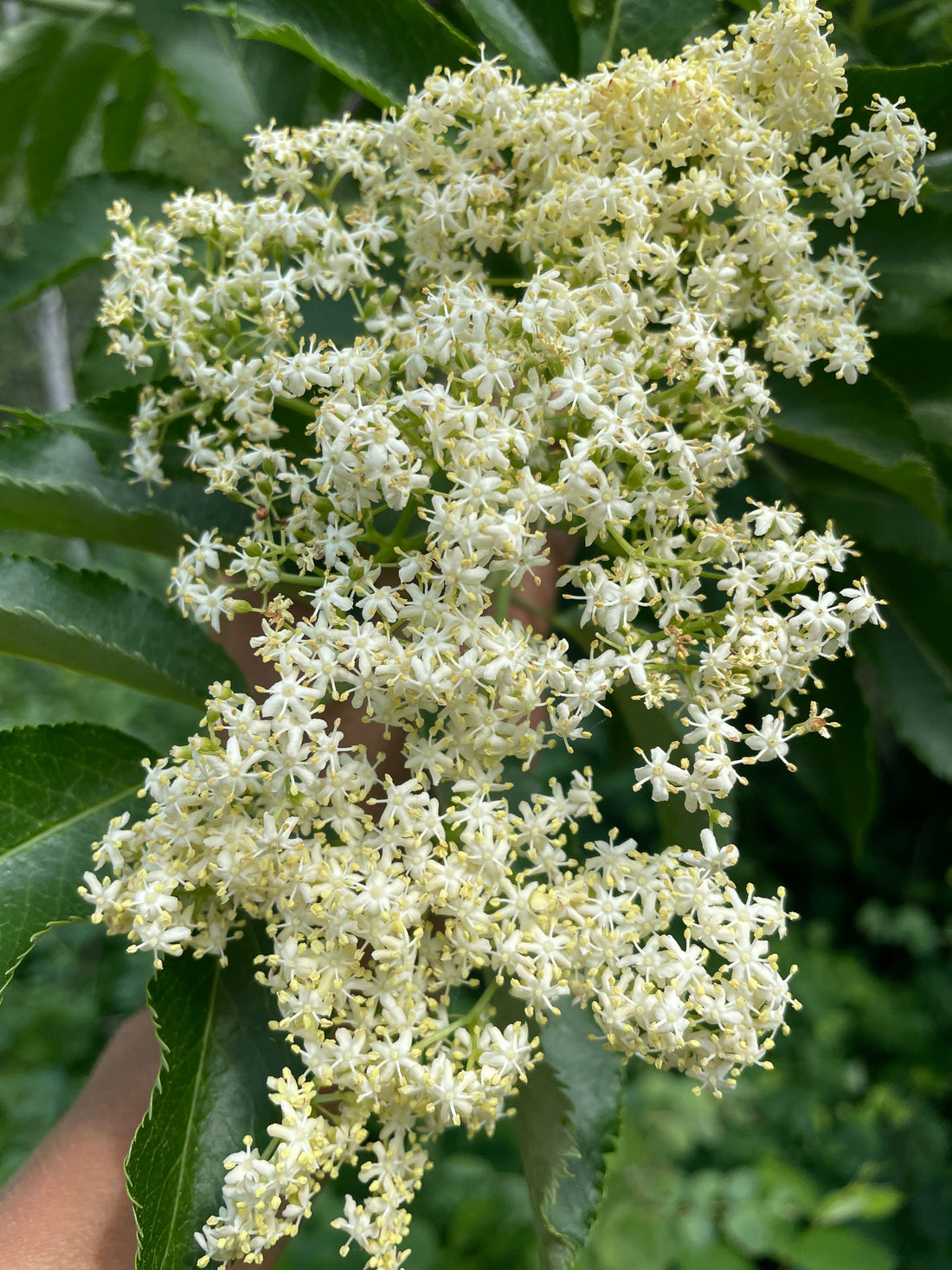
🌿 A Season of Abundance: Harvesting Alder Flower With Intention
Share
🌿 A Season of Abundance: Harvesting Alder Flower With Intention
Not every year is a harvesting year.
Some seasons call us to tend, to watch, to listen — rather than to take. And I’ve learned over the years that part of walking in step with nature means knowing when not to harvest. When to let the flowers fall to the earth. When to leave the bees to their work. When to pause in reverence instead of reaching for more.
But then there are years like this one — years of abundance.
Where the alder trees are blooming in wild, generous clusters.
Where the air smells green and full, and the branches are offering — not just producing.
This spring, I visited my mom’s acreage and found the alders there brimming with blossoms. It was undeniable. They weren’t whispering this time; they were singing.
And so I listened.
I carefully gathered a small basket of alder flowers — with intention, gratitude, and deep respect. These are not casual pickings. Alder isn’t something I harvest every season. In fact, most years I leave it completely untouched. But this year felt different. This was a yes from the land. A reminder that when the earth offers in excess, it’s okay to receive — with care.
🌼 Why Alder Flower?
Alder has long been used in folk and traditional medicine as a lymphatic stimulant, a tissue toner, and a wound healer. While its bark is better known, the flowers carry a gentler energy — one that speaks of flow, release, and grace. This year’s harvest will become part of a small-batch healing balm, supporting circulation, easing stagnation, and honoring the natural rhythm of the body — and the land.
🌱 A Note on Mindful Harvesting
If you forage, you know: the goal is not just to gather, but to connect. To ask permission. To observe the cycles. To only take when there is truly enough — for you, for the wildlife, and for the plant to continue its beautiful work.
Alder has taught me patience.
She reminds me that not every plant is mine to take.
But when the trees are singing, it’s okay to answer the call — gently.
💚 In Closing
May we always walk with eyes open and hands humble.
May we never forget that wild medicine is a gift — not a right.
And may we remember that true abundance is something we share with the land, not something we extract from it.
This balm — and the alder flowers within it — carry that story. And I’m honored to share it with you….
🌼 Alder Flower Oil Infusion for Circulation & Lymph Flow
A gentle, seasonal remedy to support flow, ease stagnation, and honor the wild medicine of alder.
(For external use only.)
✨ You’ll Need:
-
Fresh alder flowers (gathered mindfully — just enough to loosely fill a small jar)
-
Organic, cold-pressed oil of your choice:
- Olive oil – deeply nourishing and stable
- Jojoba oil – light, balancing, and long shelf life
-
Sweet almond oil – gentle and great for massage
- Clean, dry glass jar with tight-fitting lid
- Cheesecloth or fine strainer
- Label and date tag
🌿 How To:
- Lightly wilt your alder flowers on a clean towel for a few hours to reduce moisture and allow any insects to leave.
- Fill a clean glass jar about ¾ full with the flowers. Don’t pack them — allow space for the oil to flow.
- Pour your organic oil over the flowers, covering them fully. Use a clean utensil to remove air pockets.
- Seal the jar and label with the date and ingredients.
- Infuse in a warm, sunny window for 1–2 weeks (for fresh flowers) or 4–6 weeks (if fully dried). Shake gently each day.
- Strain thoroughly, pressing out every last bit of golden oil, and bottle in an amber or cobalt glass jar. Store in a cool, dark place for up to a year.
💛 To Use:
- Massage gently into swollen lymph nodes or stiff areas to support detox and flow.
- Use as-is or blend into a healing balm with beeswax and other botanicals like calendula, yarrow, or frankincense.
- Best used in small, intentional batches close to the season of harvest.
🌱 Harvest Note:
Only make this if alder is abundant in your area, and always ask permission from the land.
Take less than you think you need. Leave the rest for the bees, birds, and the trees’ own rhythm.